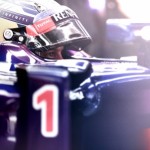Adjustable rear wings = more airborne cars?
- This topic has 20 replies, 13 voices, and was last updated 13 years, 2 months ago by
Scribe.
- AuthorPosts
- 22nd January 2011, 6:17 at 6:17 am #128799
moblet
ParticipantAm I the only one thinking that the 2011 adjustable rear wings have serious potential to cause collisions at greater-than-maximum speed? If I understand correctly, the following car will be able to suddenly increase speed when at “maximum” speed, which will make easier than it’s ever been for a single, legal blocking manoeuvre to launch the overtaking car into orbit. We certainly know we have at least one or two drivers who would feel no compunction for having caused such an “accident”.
So far all the explanations I’ve read of how the rule will work have only discussed a two car scenario – one trying to overtake one other. Will drivers be able to move the wing while in any but the first position in a procession of cars? Is that going to end in tears, especially if some of them do so, but not others?
The racing rules (written and unwritten) might have to catch up with this technical change very quickly.
22nd January 2011, 14:36 at 2:36 pm #158275ed24f1
ParticipantIts not just the blocking moves that are a concern, its braking distances as well – like we saw in Valencia last year.
22nd January 2011, 18:31 at 6:31 pm #158276Icthyes
ParticipantAs much as DC whined about it at the time, the only reason for Webber’s accident was Webber getting too close and greedy with the slipstream. If memory serves correctly he ducked back under Kovalainen just at the moment Heikki decided to brake. Very bad luck, but I don’t think closing speeds is going to have any greater effect than it has already.
22nd January 2011, 23:59 at 11:59 pm #158277 Keith CollantineKeymaster
Keith CollantineKeymasterAdrian Newey has concerns about them too:
https://www.racefans.net/2011/01/14/newey-concerned-about-overly-manufactured-f1/
23rd January 2011, 0:09 at 12:09 am #158278 Prisoner MonkeysParticipant
Prisoner MonkeysParticipantThe adjustable rear wings are based on the same principle as the F-duct, and the F-duct didn’t cause any airborne crashes. People are just making a mountain out of a molehill, probably because they don’t like the idea.
23rd January 2011, 4:28 at 4:28 am #158279Hare
ParticipantAdds another element of skill to the spectacle. Besides, the rules can be adjusted to change the degrees of wing angle mid season. So it’s possible to react quickly once some racing experience has been gained, fine tuning the affair.
However, hopefully the drivers will be cautious and become wise to the dangers present. This allows the better more daring drivers to take it closer to the edge than others.
I wonder who the first driver to have a rear wing related crash will be? It’s almost worth taking bets on… Vettel? Hamilton? Webber?
23rd January 2011, 8:43 at 8:43 am #158280moblet
ParticipantKeith, thanks for that link. I missed that article.
PM, the execution is intended to be very different – a sudden increase in speed. Like Hare says it’ll challenge the drivers more; I’m curious to see how that pans out but can’t help wondering how many chassis, and hopefully not drivers, marshals, or spectators, will be lost in the process, as it seems to me to be an inherently dangerous mechanism. Not having seen it work yet I don’t yet know whether or not I like it, although I will say that I find F1 politics and technology much more engaging than the racing, and I’m not sure that will change while grip remains compromised for following cars. I can’t imagine Newey being against it as it increases the complexity of the design challenge, which only tilts the game more in his favour.
I’m much more curious to see who will be the first driver to *cause* such a crash (not to mention their relationship with the victim). But I can see lots of obvious candidates:
– F1 newbies & oldies alike getting surprised by the sudden change in speed (would have put money on DC if he was still racing)
– Webber repeating his Valencia trick if he hasn’t learned to stay wider into the braking zone
– Alonso taking out Hamilton
– Red Bull taking each other out
– Schumacher, if he finds himself able to win races this year, taking out any challenger, or perhaps just Barrichello for old times’ sake
Got to wonder how Hamilton and Button will go with this if they’re competitive this year too, especially as they both have girlfriends to die for…
23rd January 2011, 9:56 at 9:56 am #158281 Prisoner MonkeysParticipant
Prisoner MonkeysParticipantPM, the execution is intended to be very different – a sudden increase in speed.
That’s exactly what the F-duct did when applies properly, it redirected airflow over the rear wing to cancel out the downforce and provide a speed boost.
23rd January 2011, 12:52 at 12:52 pm #158282AndrewTanner
ParticipantPerhps the FIA’s choice to only allow the wing to move at certain points on the circuit is factoring in this concern?
23rd January 2011, 13:32 at 1:32 pm #158283Tom L.
ParticipantPeople seem to be forgetting that KERS worked on the same kind of principle, with one car having an extra burst of speed to overtake another, and as far as I remember there weren’t any KERS-related crashes, were there?
23rd January 2011, 15:31 at 3:31 pm #158284moblet
ParticipantThe F-duct boosts speed, but is surely activated at the start of the straight, once maximum downforce is no longer required, not after the car has reached what would otherwise be its maximum speed. I don’t think drivers waited until the car stopped accelerating to activate the F-duct, so there was no sudden change in speed differential.
Someone with a better understanding of physics might be able to inform us here, but I would expect that the maximum benefit from KERS on a straight would be obtained by using it to reach maximum speed faster, not to try to increase maximum speed (where a greater proportion of the power would be wasted fighting maximum air resistance, also, how would one optimise the ratio of 7th gear?). On that basis KERS is activated at lower speeds at times and places where blocking and braking zones are not in play, and we should be very surprised if there was ever a KERS-related crash.
Speaking of physics, just trying some back of the envelope calculations on what the adjustable wing needs to deliver: if we say it should deliver two car lengths in two seconds, that’s a differential of 5m/s or 18km/h. Well within what these guys should be capable of handling, but enough to go bang and probably enough to provide them with a excuse given that it will happen somewhat suddenly and can only be activated when the cars are in close proximity to one another. Allowing the trigger only at certain points means they’ll know when it’s coming, which in turn means it should be pretty obvious how each driver uses that knowledge. The ruthless types are certain to push the boundaries defending their positions, and I don’t think the stewards will be able to let it go given the risks involved in contact at 300+km/h. Either on or off the track, I reckon we’re in for some fireworks somewhere.
24th January 2011, 10:08 at 10:08 am #158285Mack41
ParticipantDude, what? Maximum speed, as I understand the definition, is the maximum speed a racing car reaches period. You can’t go past “maximum speed”. You can go past the designed speed, but F1 car design takes that into consideration and these cars are engineered to a precise degree. I think your worrying waaaaaaaaaaaaay too much here. KERS added something like 80 hp to the cars. This power increase aided acceleration and increased top speed on straights by around 6kph. The F duct acted as the same thing, just by fiddling with the aero flow over the rear wing and was also good for around 6 kph. The adjustable rear wing is acting on the same principle as the F duct, it will decrease downforce to increase the top speed and will be “activated at the start of the straight(or as soon as possible) once maximum downforce is no longer required” which is exactly what you found the F duct to do. The adjustable rear wing will only be allowed in certain predetermined areas, and from what I’ve read on F1 fanatic and on the Round-up links it sounds like these areas will be only focused (on race day at least) on straights and these designated areas will end before the braking zone. I highly doubt the racers will be unable to deal with the speed and any accidents that occur due to the added boost from KERS and the rear wing would have happened anyway and will just be amplified versions of those accidents. With the amount of safety features built into cars and circuits today I don’t think we should worry too much; if anything Webbers Valencia accident was a reminder to designers to keep the cars safe for all types of accidents. Testing starts in a little over a week, lets see what is learned from that before we start worrying about the future and making, as PM said, “a mountain out of a molehill”. I agree that its annoying when F1 technology becomes more interesting than the racing.
4th February 2011, 22:40 at 10:40 pm #158286 NeusalzParticipant
NeusalzParticipantAre wing adjustment permitted during qualifying?
4th February 2011, 22:44 at 10:44 pm #158287 Prisoner MonkeysParticipant
Prisoner MonkeysParticipantYes, they are. A driver gets unlimited use of it in qualifying.
4th February 2011, 22:49 at 10:49 pm #158288 NeusalzParticipant
NeusalzParticipantThanks PM.
- AuthorPosts
- You must be logged in to reply to this topic.



